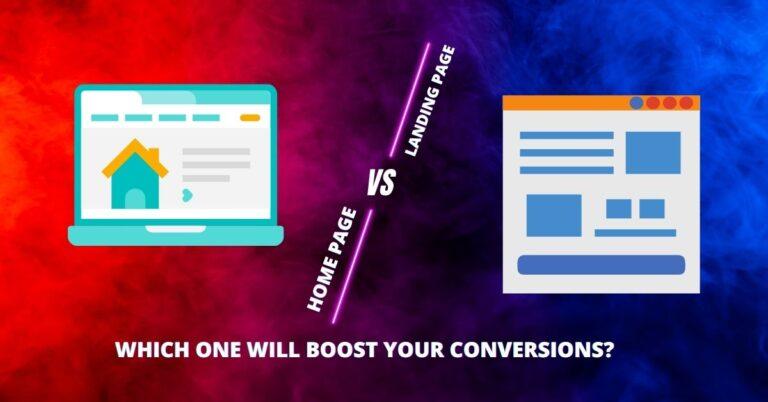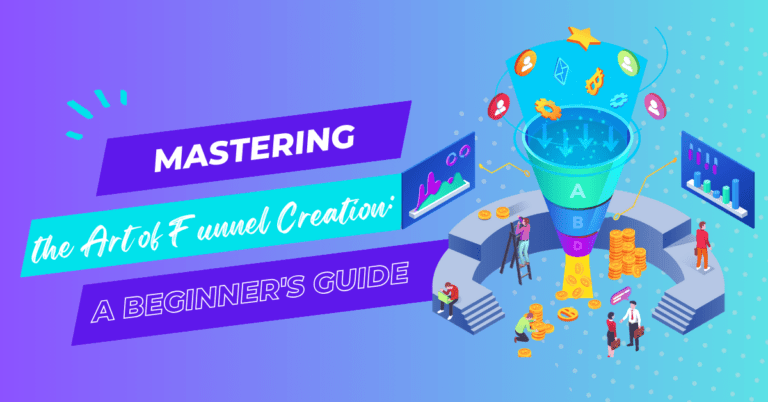In today’s fast-paced business world, time is the most valuable currency for entrepreneurs striving for success. As a time-strapped entrepreneur, you often find yourself juggling multiple tasks, from marketing and sales to customer acquisition and day-to-day operations. It’s overwhelming, to say the least. But fear not, there’s a time-saving magic that can transform your life – automated funnels. In this guide, we’ll dive into what automated funnels are, how they work, and how you can implement them to revolutionize your business.
Understanding the Challenges Faced by Time-Strapped Entrepreneurs
Let’s face it, being an entrepreneur is no easy task. You wear multiple hats, handling a plethora of responsibilities on a daily basis. Time becomes your nemesis, constantly reminding you that there are never enough hours in a day. Whether it’s managing marketing campaigns, nurturing leads, or closing deals, the struggle to find balance is real.
But take heart, as this is a challenge faced by many entrepreneurs in various industries. The key lies in finding efficient strategies that allow you to do more in less time without compromising on quality. This is where automated funnels come in, offering a game-changing solution to help you reclaim your time and boost productivity. Are you ready to unlock the time-saving magic?
What Are Automated Funnels and How Do They Work?
Automated funnels, also known as sales funnels or marketing funnels, are a series of automated steps that guide potential customers through the buyer’s journey. This journey typically involves several stages, from capturing leads to nurturing relationships and eventually making a purchase.
These funnels operate on an automated system that leverages technology to seamlessly execute each step of the process. Instead of manually handling every interaction, automated funnels use software and smart automation tools to streamline operations, saving you valuable time and effort.
The beauty of automated funnels lies in their ability to handle repetitive tasks, such as lead generation, email marketing, and sales follow-ups, without requiring constant manual intervention. By automating these processes, you can focus on more strategic aspects of your business, such as refining your product or service, building relationships, and growing your customer base.
Benefits of Automated Funnels for Time-Strapped Entrepreneurs
The implementation of automated funnels brings several advantages for time-strapped entrepreneurs:
Increasing productivity and efficiency:
Automated funnels eliminate the need for manual tasks, such as sending individual emails or manually following up with leads. By automating these processes, entrepreneurs can redirect their focus on critical business activities that require their expertise. This can lead to increased efficiency and productivity.
Saving time and money:
Repetitive tasks can consume a significant amount of time and resources. With automated funnels, these tasks can be easily and accurately handled by automation tools. By reducing the time spent on manual tasks, entrepreneurs can allocate their resources more efficiently, saving both time and money.
Scaling and growth opportunities:
Automated funnels enable entrepreneurs to reach a wider audience and nurture leads more effectively. By automating the process of delivering personalized content and offers based on customer behavior, entrepreneurs can create a seamless and engaging customer experience. This not only increases the chance of conversion but also opens up opportunities for scaling and growth.
Implementing Automated Funnels: Step-by-Step Guide
Now that you understand the power of automated funnels, let’s explore how you can implement them effectively in your business. Here’s a step-by-step guide:
Identifying Your Business Goals and Target Audience
The first step in building successful automated funnels is to clearly define your business goals and identify your target audience. Without a solid understanding of these two key factors, your funnels may not align with your overall strategy.
Conduct thorough market research to discover your target audience’s pain points, preferences, and buying behaviors. This will enable you to create tailored automated funnels that resonate with your potential customers, ultimately increasing your chances of conversions.
Creating Engaging Lead Magnets
One of the fundamental elements of a successful automated funnel is a compelling lead magnet. A lead magnet is an offer or incentive that entices prospects to share their contact information in exchange for valuable content or a solution to their problem.
Create lead magnets that provide genuine value to your potential customers. This could be an eBook, webinar, free trial, or exclusive content. The more enticing your offer, the higher the likelihood that prospects will engage with your funnel and become leads.
Mapping out the funnel structure
Once the goals are established, map out the customer journey within your funnel. Determine the necessary steps and touchpoints that will guide potential customers towards the desired action. This includes identifying entry points, creating engaging content, and defining the desired outcomes at each stage of the funnel.
Choosing the right automation tools and platforms
Selecting the right automation tools and platforms is crucial for successful implementation. Look for solutions that align with your specific needs and offer robust features for automation, integration, and analytics. Popular options include ActiveCampaign, Mailchimp, and ConvertKit.
Integrating the funnel into existing systems
Ensure seamless integration between your automated funnel and existing systems, such as your website, CRM, and email marketing tools. This will enable a smooth flow of data and ensure that each stage of the funnel is executed smoothly.
Testing and optimization for maximum effectiveness
Once your automated funnel is implemented, it’s crucial to continuously test and optimize its effectiveness. Monitor key metrics, such as conversion rates and customer engagement, and make necessary adjustments to improve the performance of your funnel.
Building an Automated Email Sequence
Email marketing plays a crucial role in automated funnels. Once you capture leads, you’ll want to nurture them, build rapport, and guide them through the buyer’s journey. This is where an automated email sequence comes into play.
Create an email series that delivers relevant content based on the lead’s actions and interests. Personalization is key here – tailor your emails to address their pain points, provide solutions, and showcase the value your product or service offers. Implement smart automation software that can trigger specific emails based on lead behavior, ensuring a personalized and seamless experience.
Directing Leads Through the Sales Funnel
To maximize conversions, it’s essential to guide leads through each stage of the sales funnel. This involves strategically utilizing landing pages, sales pages, and order forms to facilitate the purchasing process.
Create landing pages that captivate your leads’ attention and encourage them to take the desired action, whether it’s making a purchase or scheduling a demo. Optimize these pages for conversions by utilizing persuasive copy, compelling visuals, and clear calls to action.
As leads move through the funnel, provide them with valuable information, testimonials, and incentives to encourage them to take the next step. The goal is to maintain a seamless and engaging experience, from the initial point of contact all the way to the final conversion.
Evaluating and Optimizing Automated Funnels
Once your automated funnels are up and running, it’s vital to regularly evaluate their performance and make necessary optimizations. This ensures that you’re continuously improving your conversion rates and maximizing your return on investment.
Use analytics tools to measure key performance indicators (KPIs) such as click-through rates, conversion rates, and customer acquisition costs. Dive deep into these metrics to identify areas for improvement and implement A/B testing to optimize your funnels.
Experiment with different email subject lines, landing page layouts, and calls to action to find the winning combination that yields the best results. By continuously refining your funnels, you’ll increase their effectiveness and ultimately save even more time and effort.
Real-Life Examples of Successful Automated Funnels
Here are two real-life examples of entrepreneurs who successfully implemented automated funnels:
Case study 1: How Company X increased their conversion rate by 30% with an automated sales funnel
Company X, a software startup, implemented an automated sales funnel to streamline their lead nurturing process. By leveraging automation tools, they were able to deliver personalized content to leads based on their interests, resulting in higher engagement and a 30% increase in the conversion rate from leads to paying customers.
Case study 2: From overwhelmed to organized: How Entrepreneur Y utilized automated funnels to regain control
Entrepreneur Y, a solopreneur running an online coaching business, was overwhelmed with manual tasks and struggling to find time for strategic activities. By implementing automated funnels, Entrepreneur Y automated their onboarding process, freeing up valuable time and creating a more streamlined and organized business operation.
Common Pitfalls and Best Practices
While automated funnels offer numerous benefits, it’s important to be aware of potential pitfalls and follow best practices for successful implementation:
Potential pitfalls:
– Overcomplicating the funnel structure: Keep the funnel simple and straightforward, focusing on the essential steps that lead to conversion.
– Neglecting personalization: Automation should not compromise personalized experiences. Tailor your messaging and content to fit the needs and preferences of your target audience.
Best practices:
– Regularly monitor and analyze key metrics: Stay informed about the performance of your automated funnels and make data-driven decisions for optimization.
– Continuously test and improve: Implement A/B testing and make iterative improvements to optimize your funnels for better results.
– Stay up to date with automation tools and strategies: The field of automation is constantly evolving. Stay informed about the latest tools and strategies to stay ahead of the curve.
Conclusion
Automated funnels are a game-changer for time-strapped entrepreneurs. By implementing these strategic systems in your business, you’ll unlock the time-saving magic that allows you to focus on growth, innovation, and achieving your goals. Remember, it’s crucial to understand your audience, create compelling lead magnets, build engaging email sequences, and direct leads through the sales funnel. Regularly evaluate and optimize your funnels to ensure maximum efficiency and conversions. Are you ready to save time, boost productivity, and transform your business with automated funnels?
Thank you for reading! Share your experiences and questions in the comments below!




